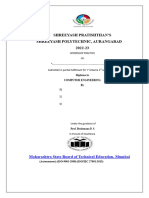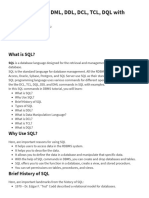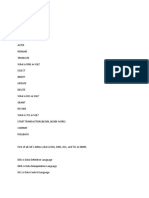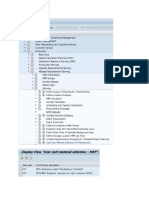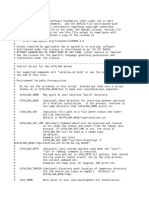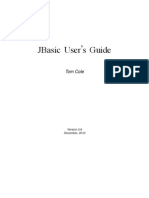0% found this document useful (0 votes)
58 views18 pagesSQL Command
SQL commands are used to communicate with databases and perform tasks like creating tables, adding data, modifying tables, and querying data. There are five main types of SQL commands: DDL commands change database structures, DML commands modify data, DCL commands manage user permissions, TCL commands control transactions, and DQL commands query the database. Common commands include CREATE to make tables, INSERT to add data, UPDATE and DELETE to modify data, and SELECT to query data.
Uploaded by
Nikhil ChauhanCopyright
© © All Rights Reserved
We take content rights seriously. If you suspect this is your content, claim it here.
Available Formats
Download as PPTX, PDF, TXT or read online on Scribd
0% found this document useful (0 votes)
58 views18 pagesSQL Command
SQL commands are used to communicate with databases and perform tasks like creating tables, adding data, modifying tables, and querying data. There are five main types of SQL commands: DDL commands change database structures, DML commands modify data, DCL commands manage user permissions, TCL commands control transactions, and DQL commands query the database. Common commands include CREATE to make tables, INSERT to add data, UPDATE and DELETE to modify data, and SELECT to query data.
Uploaded by
Nikhil ChauhanCopyright
© © All Rights Reserved
We take content rights seriously. If you suspect this is your content, claim it here.
Available Formats
Download as PPTX, PDF, TXT or read online on Scribd
/ 18

































